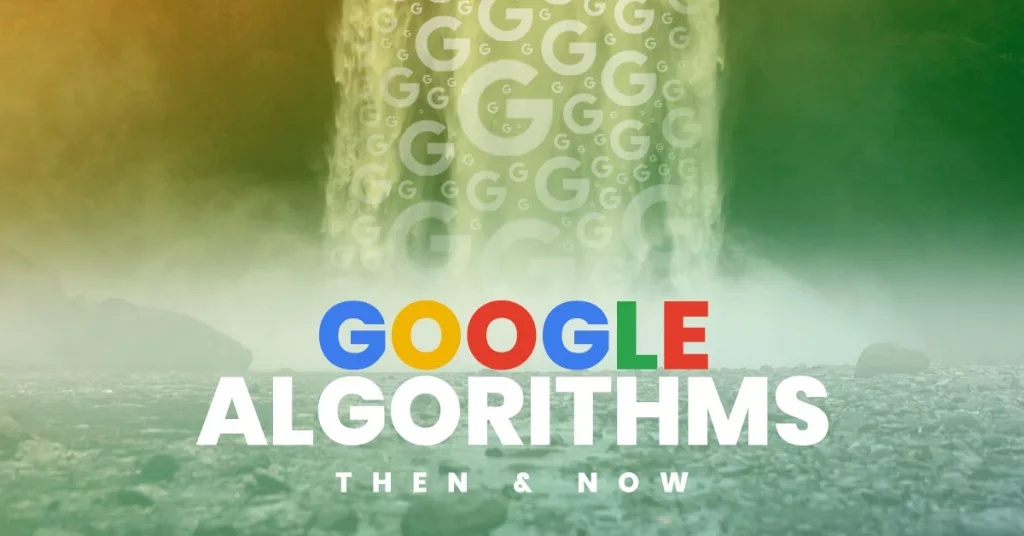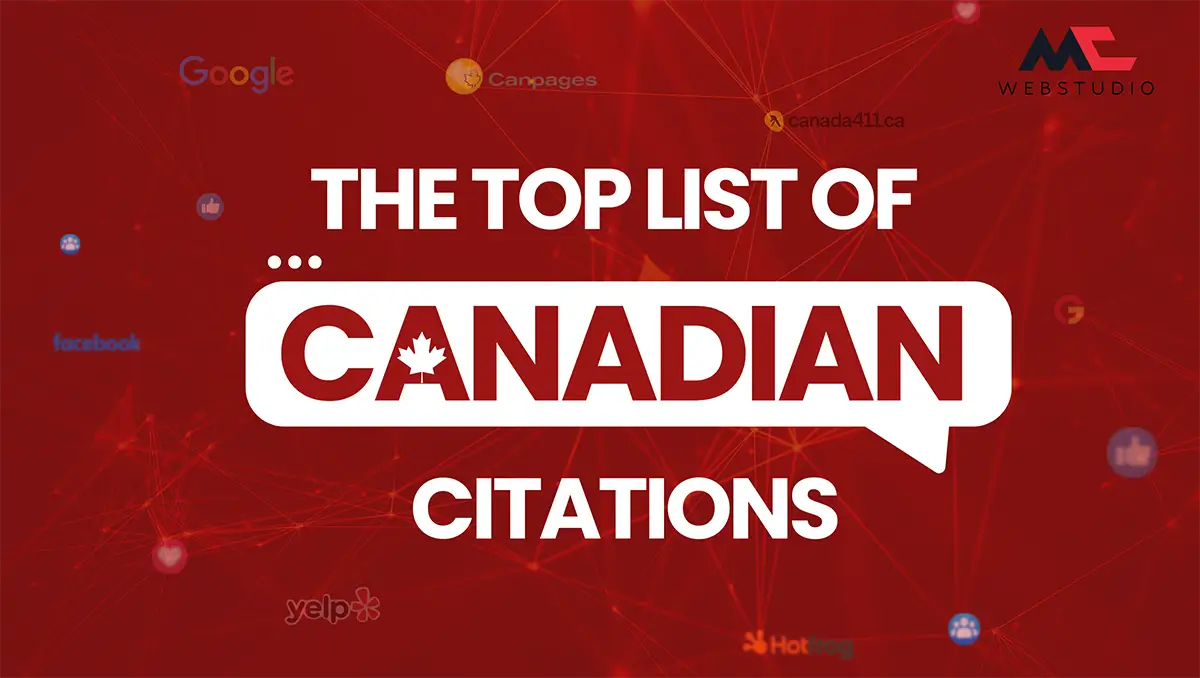
BrainStation Vancouver Review
Table of Contents My Personal BrainStation Vancouver Review 🧠 This is my BrainStation Vancouver Review. In 2018, after a year

Since joining the digital marketing industry, I have been aware of Google Algorithms and some of the more recent major updates but I wanted to know about them all, In this article you will find all of the important Google updates starting way back in September of ‘98 ( full disclosure – I was 7 when Google got its start and I would not even know about it for another 8 years).
Within the last two decades, Google has grown immensely and this could not be done without new algorithm updates. These updates which are rolled out somewhat regularly have allowed Google to process the following below plus allow users to have a better experience.
Most marketers, webmasters, and entrepreneurs are familiar with Search Engine Optimization (SEO) and realize its importance in a world that has gone digital. Since most internet users prefer Google, people with vested interests need to pay attention when changes are made to it.
A survey found out that around 80% of businesses that didn’t meet their revenue targets had 10,000 or fewer visitors monthly. This shows just how crucial a website is to entrepreneurs who are serious about growing their business. But then there’s another problem – a significant number of businesses have established an online presence and staying one step ahead of your competitors can be challenging.
One way to ensure that Google pushes you up on search engine result pages (SERPs) is to adhere to Google’s quality and relevance rules. Why does Google make these regular algorithm updates? Well, it’s because the search engine aims at proving the most relevant results to a search query.
Almost every time an update is made, it affects websites, usually changing page rankings and impacting monthly visits and sales.
In this article, I will take you through a history of Google algorithm updates past, present, and future. Let’s get started.
In September of 1998, Google was officially launched in Menlo Park, California.
In December of 2000, the search engine launched the browser toolbar and the Toolbar PageRank (TBPR).
In 2003, the changes became more significant, and they started drawing the attention of many webmasters.
Boston – February 2003. It refreshed Google’s index data and made some tweaks to its ranking algorithm. This was the start of several small monthly updates made to Google known as the ‘Google Dance.’
Cassandra – April 2003. Cassandra punished websites with hidden links and texts, something that had become common around that time. Also, it sought to penalize webmasters who manipulated the search engine by creating many backlinks directed to their domains.
Dominic – May 2003. Part of the Google dance updates that had a major impact on the counting and reporting of backlinks.
Esmeralda – June 2003. Among the last Google dance updates. There were notable infrastructural changes.
Fritz – the last of the Google Dance updates. Google changed its approach from monthly updates to gradual and incremental updates.
The Supplemental Index – September 2003. The formation of a ‘supplemental’ index, which would index part of the web and improve performance.
Florida – November 2003. After this update, people knew they needed to better their SEO practices. Websites found using bad backlinks and ‘keyword stuffing’ saw their rankings plummet. Many business owners were enraged.
Austin – January 2004. An improvement on the Florida update, it penalized websites with hidden on-page text and keyword-stuffed meta-descriptions.
Brandy – A couple of changes were rolled out in February 2004. The search engine’s semantic capacities and synonym-finding capabilities were improved, and keyword analysis was improved.
Before we look at the 2005 updates, here are some features introduced that year:
Introduction of no-follow links – Introduced when Google, Yahoo, and Microsoft came together in January of 2005. It allowed webmasters to include a ‘no-follow’ link in the back end of their code to indicate a citation or source that shouldn’t be indexed. This way, they’d protect themselves from being penalized for ‘spammy links.’
XML Sitemaps – Sitemaps help website owners plan out their sites. Before mid-2005, webmasters depended on basic HTML sitemaps to help Google index their sites and users to know their sites’ layouts. With XML sitemaps, Google can easily and quickly index all of a site’s pages. Personalized Search was also integrated in 2005, and people could use their search history to acquire more accurate results. Allegra was an update that was created to tackle suspicious links. The Bourbon update advanced Google’s content quality evaluation qualities. Another update in 2005 was known as Jagger, and it dealt with SEOs who applied strategies like paid backlink techniques and reciprocal links. There were supplemental updates in 2006 which greatly altered the filtering of pages.
Universal Search – May of 2007. Changed the way search engine results pages (SERPs) looked like. Previously, users would only get web-based results, but it was possible to get other categories of results such as maps, news, and images after this update.
Buffy – When one of Google’s engineers (Vanessa Fox) left for another company (Zillow) this name was given out of respect. Google never reported the exact update, but it was believed that it included numerous small changes.
Google Suggest – This update was made in August of 2008 and it was well-received by users. It enabled the search engine to provide the user with endings and extensions to the queries they were typing. This allowed people to explore more information, especially those doing keyword research.
Vince-February 2009. When Vince was rolled out there were changes in rankings and surprisingly, big brands came out on top while small businesses were on the receiving end. Although Google reported that the changes were minor, there was a lot of backlash from small and medium-sized businesses.
The canonical tag – was specifically added to deal with duplicate content problems that reduced visibility. It improves the visibility of pages by allowing webmasters to identify the version of a page they want to be indexed and the one they want left out.
Real-time search – this update enabled Google to index items and news stories from social media networks in real time. This way, internet users get news content almost instantly.
Caffeine – June 2010. Caffeine boosted the algorithm’s performance by increasing search results, indexation, and crawling speeds by more than 50%. This was not actually an algorithm update but a total reconstruction of the Google Index. When Google was launched back in the 90’s there were far fewer websites and users.
Google Instant- powered by Google Suggest. It allowed users to see the results as they keyed in their search queries. Prior to this release, Google just passed the 1 Billion users per week mark. Back in 2010, I had nothing to do with Search Engine Optimization or anything digital marketing-related and even reading about these numbers now is still crazy!
May Day – It targeted sites that used long, low-quality content to rank for long-tail keywords. Only such sites were affected.
Social Signals – Social media platforms such as Facebook and Twitter have gained popularity, so they have become important ranking factors. Note that they’re not as vital to ranking today as they were during that time.
Negative reviews – there were reports that the more negative reviews a business got, the more they became visible on Google. Google updated its algorithm to tackle this issue.
Google Places – it replaced the Local Business Center. Google Places was a section where businesses could set up their profiles and advertise their products and services.
Google Panda Update – February 2011. Panda is one of Google’s major updates if we look back at all of the updates rolled out in the last decade. This update targeted SEOs who created sites with the sole purpose of ranking on search engines.
Many low-quality content websites outranked those with top-notch content. Panda update penalized two types of sites: those with thin content offering little value to the user and those built specifically to link to other web pages/websites. Following this update, it was quite difficult for anyone to gain high rankings without high-quality web pages.
Venice-February 2012. This was another important update. It was designed to help searchers looking for local results so Google would use your IP address or the location you had set.
Pirate –This update targeted websites that posted copyrighted content. If a site had too many DMCA (Digital Millennium Copyright Act) requests, it would rank poorly.
The Knowledge Graph -May 2012. To help users get more information easily and quickly. But what’s a Knowledge Graph? They are panels with additional data that appear on the right side of the screen on the SERP.
The Knowledge Graph is capable of understanding the relationships between people, things, and places. Today, it provides better results because of the increase in sites with structured information. In December of 2012, the Knowledge Graph was enhanced and could give results in other languages like Italian, German, French, Spanish, Japanese, and Portuguese.
Penguin – April 2012. Penguin targeted unnatural spammy links. With the tight competition for the page one spot in SERPs, many webmasters bought links from other websites to increase their rankings. In most cases, this tactic worked. This update penalized SEOs who would exchange, buy, or artificially create backlinks (Black Hat Practices).
Google gave a negative value to a website whose links looked artificial. Thus, people who had committed this offense saw their rankings reduce significantly. Penguin greatly changed SEO-website owners had to use genuine link-building strategies if they wanted to look good in Google’s eyes.
Hummingbird-The update enabled Google to provide more accurate results by analyzing all the words used by a searcher. It set the foundation for voice search, which has become more popular in the past few years.
The Hummingbird update was meant to help the search engine understand searcher intent better. To ensure this update worked for them, webmasters had to ensure they used synonyms, were moderate in their optimization, and published readable content.
Pigeon 2014-This was an update on the local search algorithm. Google Maps and local search results were affected searches significantly improved and users got results near their locations.
Mobilegeddon- April 2015. A lot of people were using their mobile devices to search for information on Google, thus the name “Mobilegeddon.”. This update affected the search rankings on mobile devices only, and more specifically pages and not the entire website. After this update, businesses/individuals with mobile-friendly sites would see their rankings go up, while others saw the opposite.
RankBrain 2015-RankBrain is a cutting-edge machine learning system that Google would use to understand search queries and all data information. It analyzes phrases in a search query, and when it encounters unfamiliar words, it makes a good guess. Also, it reviews a user’s past searches to come up with the best results possible.
Possum 2016-This is another update that focuses on the local search algorithm. A significant number of local businesses were performing poorly in organic search and Possum was the solution. It made adjustments to Google’s local ranking, increasing local businesses’ visibility on search engines. This meant that local search wasn’t dependent on organic search anymore.
Fred-Mar 2017. The Fred algorithm update took action against websites that focused on aggressive monetization over user experience and low-quality content. The websites that were hit the hardest had lots of ads, deceptive-looking ads, and lots of affiliate links.
From 2017 onwards, large Google updates were called “Core algorithm updates.” The updates are usually small, or improvements to updates made earlier. By regularly reviewing their site’s performance and rankings, webmasters can see what areas were targeted by new updates.
Medic 2018
After the Medic update of 2018, a large number of sites in the medical, health, and fitness industries saw their rankings go down. Although many webmasters in this niche didn’t understand the exact reason for the update, it was believed to be Google’s attempt to filter out sites that contained false information.
BERT –BERT (Bidirectional Encoder Representations from Transformers) was another machine learning system integrated into the Google algorithm. Instead of looking at words typed in by the user one by one, BERT analyses all the words and strives to find out the context to provide more accurate results.
It’s almost certain that there will be no more major updates like Panda and Penguin. Google will focus on smaller, gradual, and hardly noticeable updates in the future. More machine learning updates like RankBrain will be integrated into the algorithm, considering they are efficient and take a short time to implement changes.
With the emergence of smart speakers and voice search, more app-based features are likely to be added to Google. What we are sure of is that Google will add more technologies and features to improve search results.
Although Google has become more transparent these days, it’s still difficult to determine exactly what their updates target. Keep monitoring your site’s performances and those of your competitors to see what you can tweak to rank better. The secret of staying one step ahead in SEO is to be flexible and quickly adapt to Google algorithm updates.

Table of Contents My Personal BrainStation Vancouver Review 🧠 This is my BrainStation Vancouver Review. In 2018, after a year

Table of Contents In today’s digital landscape, starting a business from your laptop or phone in Canada offers unprecedented flexibility

Table of Contents Top Local Business Citations In Canada 🍁 Google Business Profile Ahrefs Domain Rating: 98 Facebook Ahrefs
Copyright © 2024 MC Web Studio | Designed & Developed In Kamloops, BC 🍁